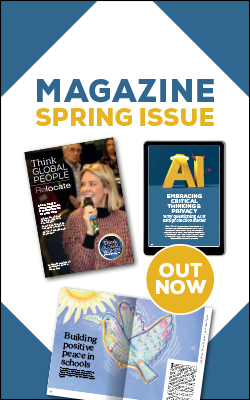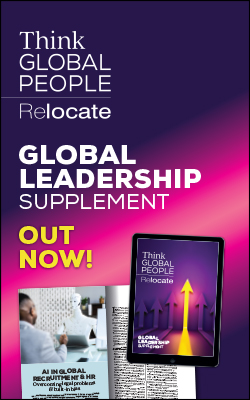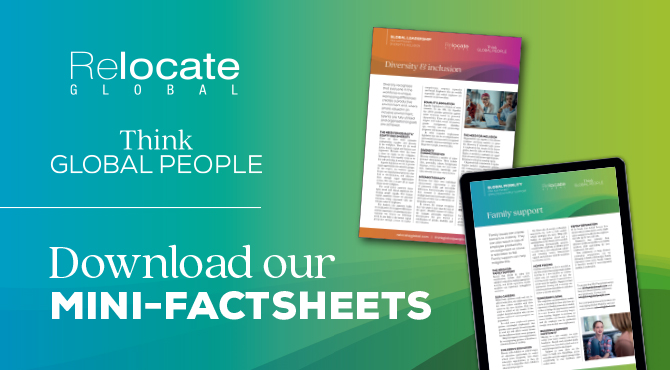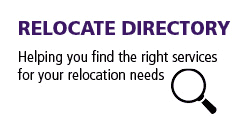Global mobility professionals: Improving productivity and wellbeing
Global mobility professionals report increasing workloads, greater complexity and pressure in their roles. Insufficient leadership engagement and inefficiencies are some of the challenges. Improving productivity must be linked with addressing wellbeing. Dr Sue Shortland reports on recent research.

This article is taken from the Leadership Supplement the Spring 2025 issue from
Relocate Think Global People
Click on the covers to access the digital editions.Risk management in a climate of uncertainty is compounded by a lack of understanding of the process of mobilising employees by other functions.
The 2024 research from Crowe, Santa Fe and Expatise Academy, ‘Taking Care of Global Mobility Professionals’, found that the global mobility function is facing increasing complexity of its workload and more work pressure. In 2019, the key issues reported by the global mobility function were managing compliance, cost control/cutting and improving the employee experience. Two years on and post-Covid, global mobility professionals reported managing issues like cross-border remote workers, increasing volumes of unstructured cases and a growing emphasis on duty of care – in addition to the pressures of 2019.Today, the volume of cross-border workers has continued to grow. The uncertainty of a politically unstable world has also increased pressures concerning duty of care. Risk management in a climate of uncertainty is, the report suggests, compounded by a lack of understanding of the process of mobilising employees by other functions within the business.Despite an expectation to provide advisory support to human resources departments, line management and employees, and to manage increasingly complex compensation and compliance aspects, global mobility professionals report that they spend insufficient time with senior leadership. This means that, rather than being part of the talent deployment decision-making process, global mobility typically only becomes involved post-appointment. This creates tension with internal stakeholders. Global mobility professionals report difficulties in breaking this barrier and securing greater influence in the decision-making process.
Functional inefficiencies and low visibility
The research also notes that with competing pressures, global mobility professionals report spending too much time dealing with external suppliers, on policy discussions, reporting and operational delivery. Exception management was considered to be a key area of inefficiency. Yet efforts spent cost-cutting were thought to detract from employee- and risk-centric approaches to policy design and implementation. Inefficient technology was also considered to add to pressures on the function, particularly given the increasing demand for management reporting.Global mobility professionals also report a lack of leadership visibility and communication. This is despite their extensive skills base encompassing specialist knowledge in areas such as tax, immigration, employment and risk management in multiple jurisdictions. They find they are unable to engage effectively with leadership. This adds to the pressures they face in their roles.The research notes this may be the result of being so specialist that they become distant from leadership decisions. Their work primarily becomes that of complex case management – meaning that their function is operational rather than strategic. In turn, this can result in global mobility professionals being viewed as a back-office function grounded in technical expertise.As organisations increasingly offer individualised employment opportunities – such as remote working and working from anywhere – and a wider range of flexible assignments, moving away from traditional long-term expatriation means the range of permutations of complex cases grows. This suggests that complex case management is likely to increase going forward, resulting in further pressure on the function.Read related articles
- Global mobility professionals: Looking to the future by learning from HR’s past
- The future of the global mobility function: Learning from HR’s evolution
- Transforming the global mobility function
- The global mobility function: well-being, talent and inclusion implications
Enhancing and measuring the function’s productivity
If the global mobility function is to manage increasing complexity, workload volumes and associated time and other pressures in the future, it must improve its productivity. This raises several issues that must be considered and addressed. First, how to measure the function’s current performance and then identify actions to improve productivity. It also raises the issue of wellbeing in the profession and how global mobility professionals can help themselves to improve this and engage with other stakeholders to gain their support.A number of metrics can be adopted to measure the global mobility function’s productivity. These include:Assignee deployment process dataAssignment deployment processes comprise several facets that can be recorded and monitored. These include, for example, time taken to complete the assignment process and deploy individuals to fill international vacancies, from the identification of the candidate to that person being in post. Ensuring all compliance issues are met effectively is one indicator of a successful deployment process.Employee experience feedbackAnalysis of feedback from relocated staff and their families about their experience of the international deployment process can be an indication of the global mobility function’s efficiency and effectiveness. Employee satisfaction, as evidenced in assignee testimonials, can help influence others to accept international assignments and help to widen the talent pool.Business/management satisfactionAnalysis of feedback from home- and host-country line managers concerning their experience of the international deployment process provides a business perspective as to how organisational needs have been met. Feedback can be used to improve processes. Assignment costs can also be monitored and cost savings recorded.Assignment completion/repatriation statisticsSuccessful completion of assignments can be measured. Early return statistics need to be evaluated to determine their cause. Post-repatriation turnover can be used as a measure of successful repatriation processes. However, these statistics should be treated with caution. For example, early returns might be for business reasons rather than poor assignment processes. Repatriation turnover might be due to a lack of career opportunities that are outside the global mobility function’s remit and influence.Once baseline data is in place, it is possible to plan actions to improve on the metrics recorded. A starting point for this involves turning to previously identified inefficiencies (such as those highlighted in the research report discussed above) and addressing these systematically. For example, the introduction of appropriate technology and AI systems can bring about considerable time savings for time-pressed global mobility professionals. Relocation policy redesign to provide more flexibility in compensation approaches can minimise policy exceptions, resulting in considerable time savings too.Greater interaction with the wide range of stakeholders in the business, especially those in leadership positions, can help to bring about greater efficiencies. For example, global mobility professionals are aware of the typical barriers to mobility and understand family issues and how these can impact an individual’s ability to move. Global mobility professionals’ involvement in the selection process can tease out issues that might not occur to others with less understanding of global mobility. If they are not identified, these issues are likely to prove problematic further along in the deployment process.The involvement of global mobility’s expertise early on can potentially make the selection and international deployment process faster and more effective. In turn, this should benefit the business, improve the employee experience, reduce costs and improve the global mobility function’s productivity.Wellbeing of global mobility professionals‘Taking Care of Global Mobility Professionals’ suggests the function has a duty of care to its own wellbeing. The report sets out three areas where members of the function can make progress.- Adopting a different mindset as to how global mobility is positioned as a function in the business, recommending that it seeks greater involvement in the purpose of the business and the environment in which it operates.
- Upskilling the global mobility function and adopting a transformational approach, shifting operational aspects to shared services and/or external partners. This will open up opportunities for more strategic activities.
- Improving the operational dynamics between suppliers and the global mobility function and ensuring that the right technology is integrated into the relationship.


Find out more about the Think Global People and Think Women community and events.


Subscribe to Relocate Extra, our monthly newsletter, to get all the latest international assignments and global mobility news.Relocate’s new Global Mobility Toolkit provides free information, practical advice and support for HR, global mobility managers and global teams operating overseas.
©2025 Re:locate magazine, published by Profile Locations, Spray Hill, Hastings Road, Lamberhurst, Kent TN3 8JB. All rights reserved. This publication (or any part thereof) may not be reproduced in any form without the prior written permission of Profile Locations. Profile Locations accepts no liability for the accuracy of the contents or any opinions expressed herein.










































